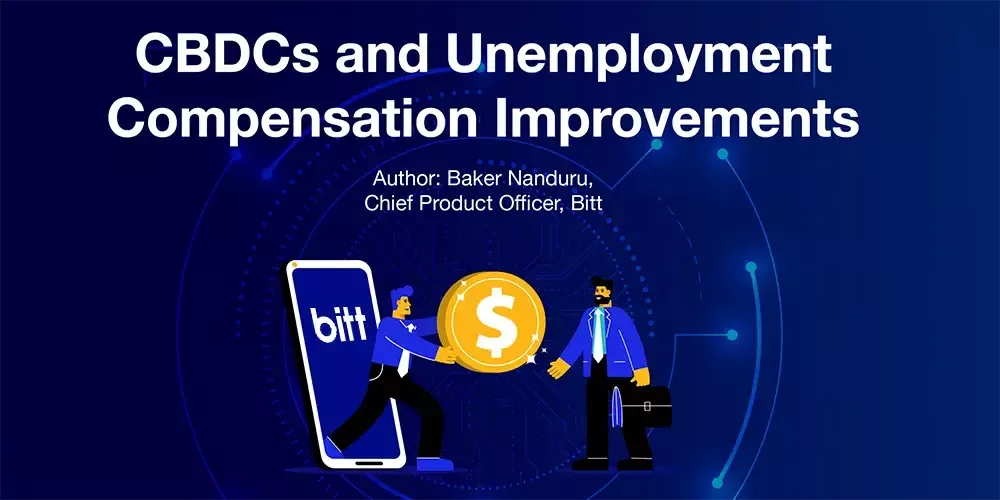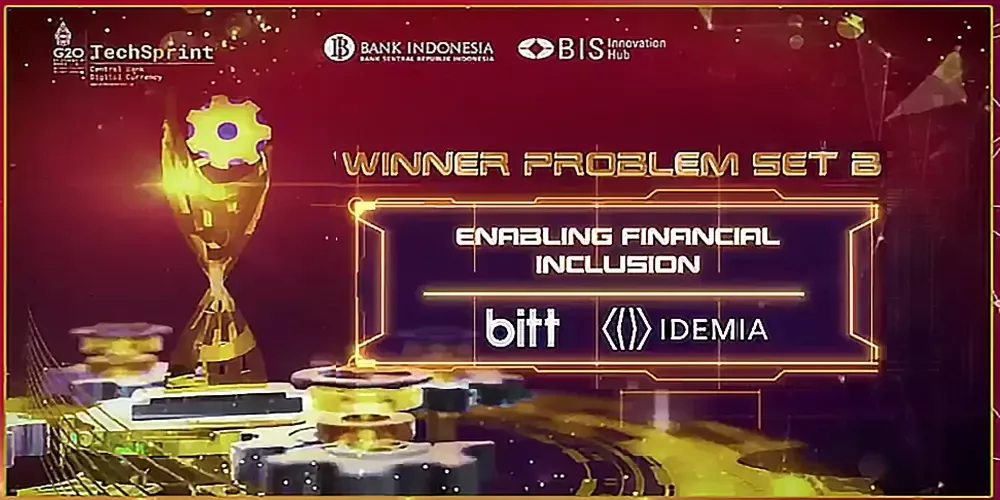CBDCs and Unemployment Compensation Improvements

In 2021, the US government collected payments of $4.05 trillion, while it spent $6.82 trillion. The top six spending categories include income security ($1.6T), social security disbursements ($1.1T), health payments ($800B), national defense payments ($750B), Medicare payments ($700B), and unemployment payments ($400B).
In a series of posts, I want to highlight how CBDCs can transform government collections and disbursements. Let us look at the $400 billion spending category, unemployment compensation:
While the unemployment rate is very low at 3.9%, the US still has 6.3 million unemployed people and 1.9 million unemployment claims were made in 2021. This program's execution varies in each state regarding disbursement amount, benefit duration, and qualification criteria. The disbursements are delivered on a weekly basis via pre-paid debit cards or checks.
The unemployment program is fraught with fraud, errors, and complexity. The fraud is caused by bots filing bogus applications in bulk; teams of fraudsters in foreign countries making phony claims; online forums giving away fraud tips; and bank-operated pre-paid card issues.
The shortcomings of the program’s execution is highlighted in stories from the recent past: A Bronx man who allegedly received $1.5M in just 10 months; an African country’s government official was accused of pocketing over $350K in six weeks; California unemployment fraud reached at least $20B; and Bank of America was fined $225M over benefit disbursements.
The federal and state governments have invested billions of dollars to optimize the unemployment program over the last few decades. In spite of that, the program has disbursement error rates ranging from 10% to 38%. Florida’s and Tennessee’s programs have the highest error rates of over 35%. This amounts to $60B dollars annually, assuming a 15% error rate across all states. The primary disbursement error is overpayments.
At a macro level, unemployment program execution issues fall into three categories:
- Claims are phony
- Disbursements are expensive, error-prone, and not inclusive
- No visibility after disbursements
In the future monetary system, where CBDCs are overseen by the central bank and operated in a two-tier model with daily commercial bank and consumer CBDC transactions, a federal program — like unemployment compensation — will become cost-effective, more inclusive, and highly effective.
Central banks enable the creation of consumer wallets via the CBDC platform, with varying degrees of daily transaction and total wallet limits, based on the depth of identity verification and corresponding legislation. For example, a wallet could have a $100 daily transaction limit and a $500 total wallet limit when only a person’s phone number is validated. That consumer wallet can be upgraded to a higher limit, once the address is validated. The wallet limits can be further upgraded when a government-issued identity is validated. The wallet limits help reduce fraudsters’ ability to make phony claims and limit disbursements. Federal or state governments will also have better visibility of individual program participation which would deter and restrict fraudsters from simultaneously enrolling in the programs in multiple states.
Federal and state programs could leverage CBDC programmability to minimize fraud and errors, and reduce operational overheads. Programmability restricts fraudsters from using disbursements outside the United States. It could also reclaim disbursed money from consumer wallets if those funds are unused after a certain time and decrease the use of money on illegal activities, etc. CBDC programmability will conform to local and federal government regulations and laws.
CBDC could reduce disbursement error rates by at least 50%, resulting in huge savings and reducing operational overheads for the government. In the case of overpayments, eligibility, or other mistakes, federal and state agencies could adjust consumer wallet balances with future disbursements or other means.
Federal and state programs pay a 1% fee (~$400B annually) to banks for disbursements via pre-paid cards. On top of this expense, every state has a large operations team to oversee the disbursement of payments. CBDC transaction costs are much lower than any debit, credit, or ACH transaction cost.
CBDCs are inherently built for financial inclusion. Unbanked or underbanked people often depend on federal and state social support programs. CBDC features like offline payment and consumer wallet accessibility drive the inclusion of people without smartphones, living in remote locations, or having limited internet connectivity. Overall, CBDC enables a cost-effective, inclusive, and efficient future-proof unemployment compensation program.




